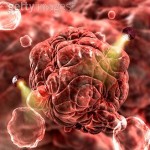 The University of Buffalo recently unveiled a dramatic development in the nanotech realm. Through the use of magnetic nanoparticles it is possible for scientists to “remotely control ion channels, neurons and even animal behavior.” There are many possible real-world applications of this technology including targeted cancer, diabetes, and neurological disorder treatments.
The University of Buffalo recently unveiled a dramatic development in the nanotech realm. Through the use of magnetic nanoparticles it is possible for scientists to “remotely control ion channels, neurons and even animal behavior.” There are many possible real-world applications of this technology including targeted cancer, diabetes, and neurological disorder treatments.
The method utilized in the control of animal behavior involves the use of magnetic nanoparticles which have entered into the cell membrane of the nematode C. Elegans. The size of the particles, only six nanometers, is essential for the easy movement into the cell membrane. Once situated, the subject was exposed to a magnetic field (much like the intensity of an MRI) and the nanoparticles were heated to 34 degrees Celcius (93.2 degrees Fahrenheit). The worms, which had been moving in a forward direction, move in the opposite direction when the temperature rose.
Group of C. Elegans worms prepared by UB team with nanoparticles at their sensory neurons respond to the application of a magnetic field. To learn more, visit http://www.buffalo.edu/news/11518
“We targeted the [magnetic] nanoparticles near what is the ‘mouth’ of the worms, called the amphid,” explained Arnd Pralle, PhD, assistant professor of physics. “You can see in the video that the worms are crawling around; once we turn on the magnetic field, … most of the worms reverse course. We could use this method to make them go back and forth. Now we need to find out which other behaviors can be controlled this way.”
The implications of this breakthrough could just as easily be applied to humans. Already, there are groups utilizing magnetic nanoparticles to battle cancer cells in a very targeted manner. But, the net is cast wider with the application to remotely controlling animal and human behavior.
In the legal arena, one could pose the question “Is this discovery worthy of patent protection?” Post Bilski, 2010 WL 2555192, the question might easily be answered with regard to patentable subject matter and processes. Now that the machine or transformation test is not exclusively definitive, it is more likely than not the process of heating magnetic nanoparticles to cause a living organism to behave differently would clear the first hurdle on the path to a patent. Of course, the battle would continue in the ‘non-obvious’ and ‘prior publication’ stages, however, innovation is not stifled and the legal battles rage on.
